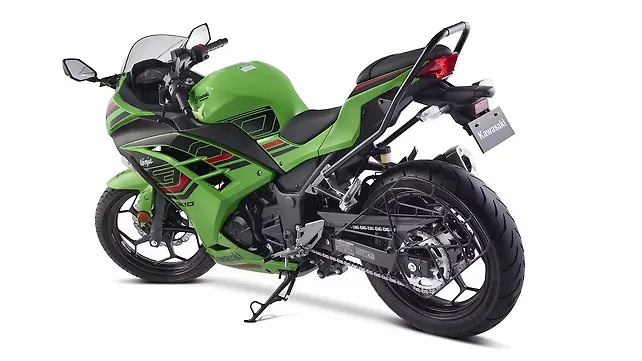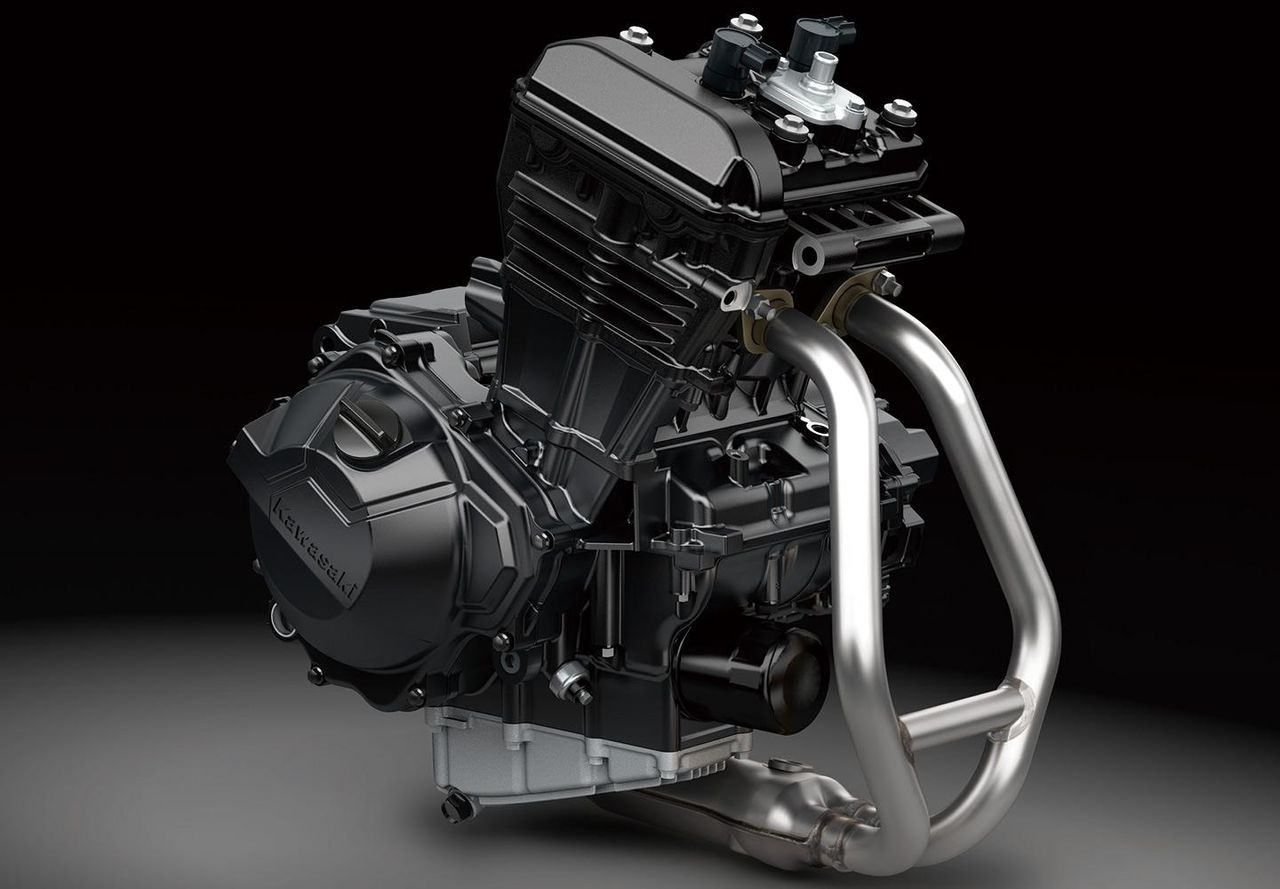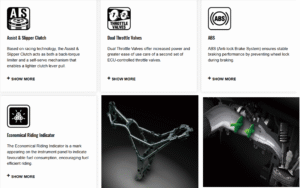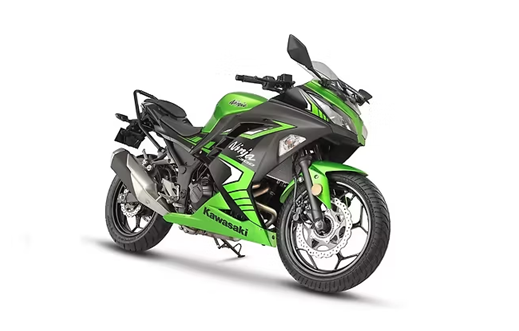When it comes to entry-level premium sport bikes in India, the Kawasaki Ninja 300 has been one of the most popular names for over a decade. Known for its sporty design, reliable performance, and refined ride quality, the Ninja 300 has become a dream bike for young enthusiasts who want a balance of style and practicality. With the latest updates, Kawasaki continues to keep the Ninja 300 relevant in the competitive two-wheeler market.
Let’s take a closer look at the features, performance, and appeal of the Kawasaki Ninja 300.
Stylish and Aerodynamic Design

The Kawasaki Ninja 300 carries forward the aggressive design language of the Ninja family. Its twin-pod headlamps, sculpted fuel tank, sharp fairings, and aerodynamic bodywork give it a big-bike feel. The sleek tail section and sporty split seats enhance its athletic character.
Available in striking colors like Lime Green, Ebony, and Candy Lime Green, the Ninja 300 has a strong road presence that instantly attracts attention. The bike’s design is not only stylish but also functional, ensuring reduced air drag and better stability at higher speeds.
Engine and Performance

At the heart of the Ninja 300 is a 296cc liquid-cooled, parallel-twin engine. This refined motor delivers around 39 PS of power at 11,000 rpm and 26.1 Nm of torque at 10,000 rpm. Paired with a 6-speed gearbox and an assist-and-slipper clutch, the bike offers smooth gear shifts and reduced effort during city rides.
The parallel-twin configuration makes the Ninja 300 stand out in its segment, providing a smoother ride with less vibration compared to single-cylinder rivals. It can comfortably cruise at highway speeds while also being agile enough for city traffic.
Riding Comfort and Ergonomics
Unlike many aggressive sport bikes, the Ninja 300 is designed with practical ergonomics. The slightly raised handlebars and well-cushioned split seats make it suitable for longer rides. The footpeg position strikes a balance between sporty and comfortable, ensuring riders don’t feel fatigued on extended journeys.
Its 785 mm seat height makes it accessible for a wide range of riders, while the overall weight of around 179 kg ensures stability without feeling overly heavy to handle.
Suspension and Handling

The Ninja 300 uses a 37 mm telescopic front fork and a mono-shock rear suspension. This setup offers a good mix of comfort and sporty handling. The suspension is tuned to absorb bumps on Indian roads while still providing confidence in corners.
The chassis is well-balanced, and the bike feels planted at high speeds. Riders appreciate the predictable handling, which makes the Ninja 300 a great option for beginners stepping into the premium bike segment.
Braking and Safety Features

Safety is a key aspect of the Ninja 300. The bike comes with 290 mm petal disc brakes at the front and 220 mm petal disc brakes at the rear, providing strong and reliable stopping power. The inclusion of dual-channel ABS ensures confidence in emergency braking and wet conditions.
The assist-and-slipper clutch further enhances safety by preventing wheel lock-up during aggressive downshifts, especially when riding at higher speeds.
Features and Technology

The Ninja 300 is equipped with a semi-digital instrument cluster, which includes an analog tachometer alongside a digital display for speed, trip meters, fuel gauge, and other indicators. While it may not have a full TFT display like newer rivals, it offers all the necessary information in a clear and easy-to-read format.
Other notable features include:
-
LED tail lamp and indicators for better visibility.
-
Sporty exhaust note that enhances the riding experience.
-
17-inch alloy wheels with tubeless tyres for improved grip and handling.

Mileage and Efficiency
Despite being a performance-oriented motorcycle, the Ninja 300 offers decent fuel efficiency. On average, it delivers around 25–28 km/l, depending on riding style and conditions. With its 17-litre fuel tank, riders can expect a practical range for both city commuting and weekend rides.

Competition in the Segment
The Kawasaki Ninja 300 competes with bikes like the KTM RC 390, Yamaha R3, and TVS Apache RR 310. While some rivals offer more advanced features or higher power output, the Ninja 300 stands out for its parallel-twin engine, refined ride quality, and premium brand value.
Its blend of sporty looks, smooth performance, and everyday usability makes it a preferred choice for riders who want a reliable entry-level sport bike.
Price and Ownership
In India, the Kawasaki Ninja 300 is priced at around ₹3.4 lakh (ex-showroom). While this may seem higher compared to some single-cylinder rivals, buyers see value in its build quality, twin-cylinder engine, and brand legacy.
Kawasaki has also localized production of the Ninja 300 in India, which helps in keeping maintenance costs reasonable compared to imported models. Additionally, Kawasaki’s service network across major cities ensures peace of mind for owners.
Conclusion
The Kawasaki Ninja 300 continues to be a strong contender in the entry-level premium sport bike category. With its striking design, refined twin-cylinder engine, practical ergonomics, and reliable safety features, it appeals to both new riders and experienced motorcyclists looking for an everyday sports bike.
While it faces tough competition, the Ninja 300’s combination of performance and comfort makes it a unique offering in the market. For enthusiasts who want to step into the world of premium motorcycles without compromising on reliability and style, the Kawasaki Ninja 300 remains a solid choice.
2000W Electric Bikes : Power, Performance & Versatility
Exploring the Royal Enfield Meteor 650: A New Chapter in Cruiser Motorcycling

